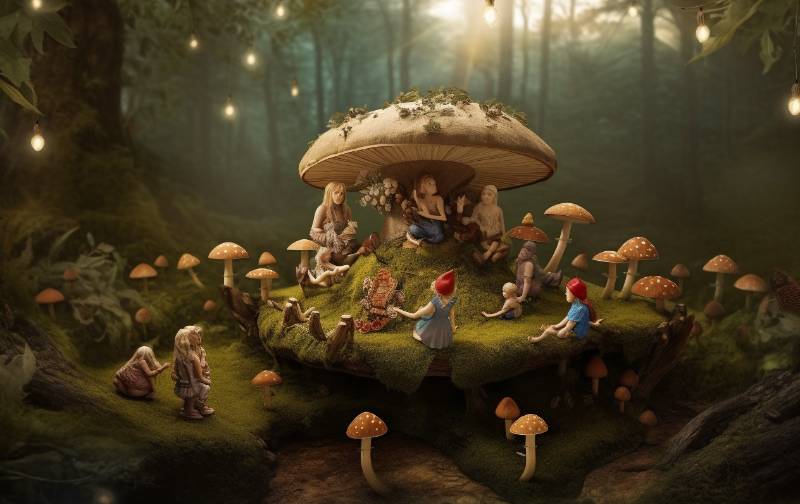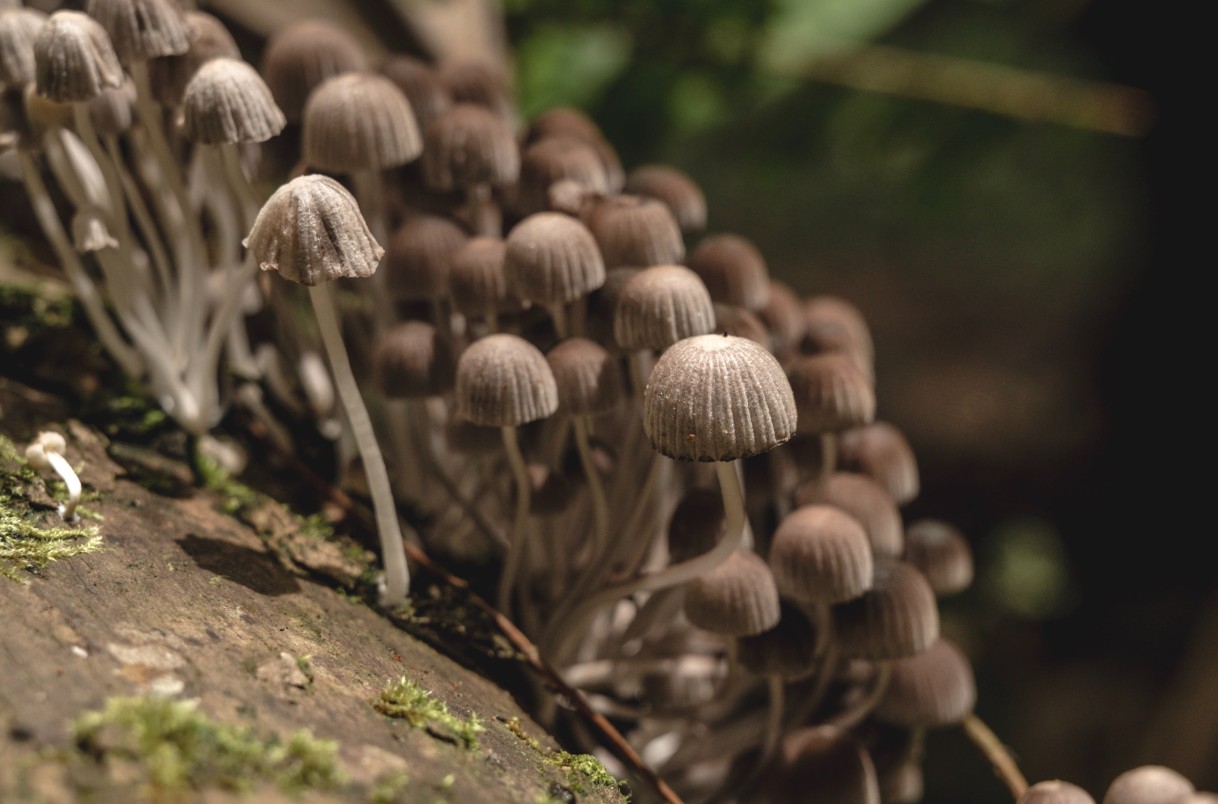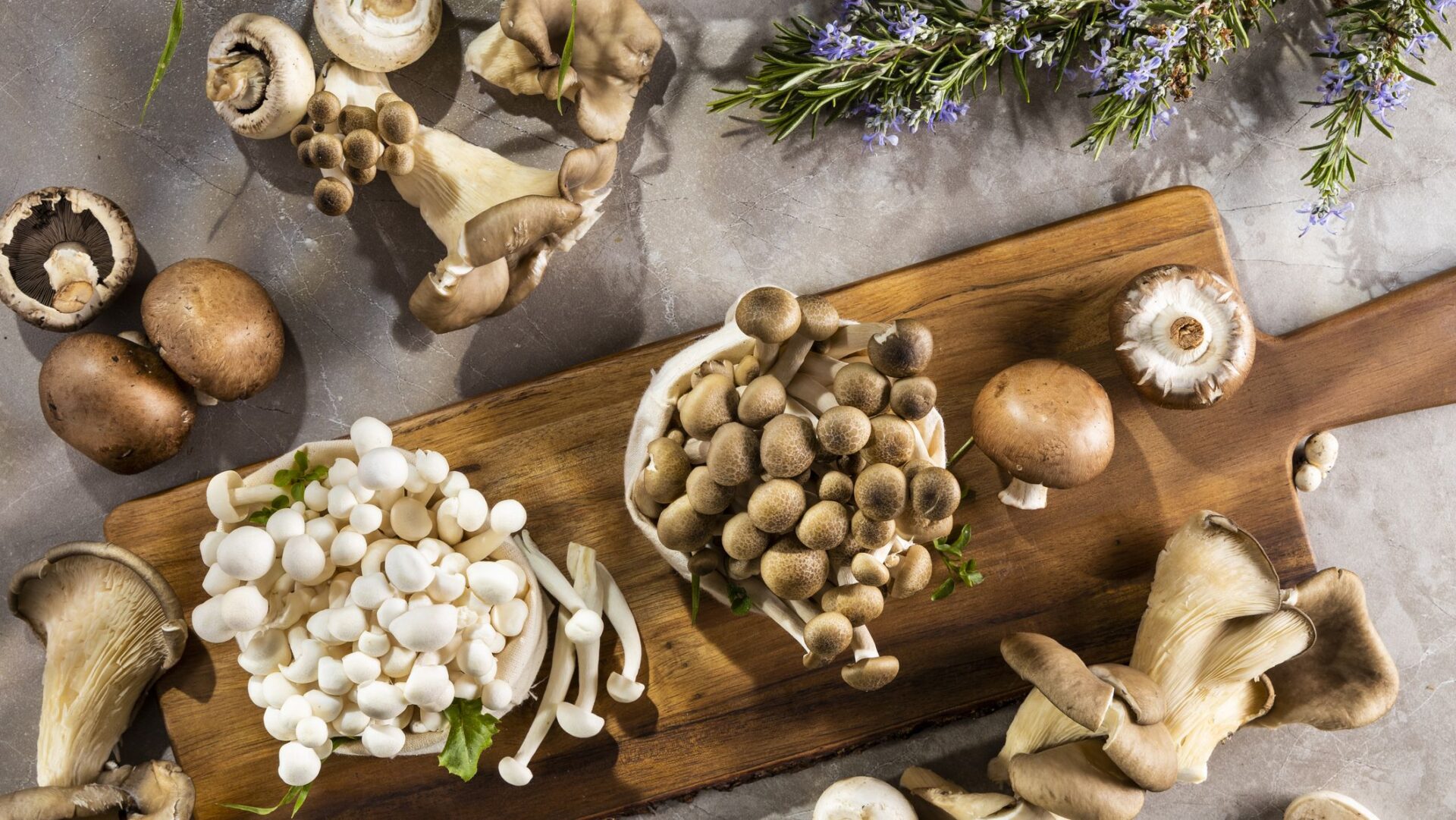Mushrooms in Art, Culture, and Folklore: A Journey Through Myths and Symbolism
Mushrooms have captivated human imagination for centuries, weaving their way into art, culture, and folklore across diverse societies and civilizations. From ancient myths to modern symbolism, these enigmatic fungi have left an indelible mark on human consciousness. Exploring the multifaceted roles of mushrooms reveals a rich tapestry of meanings and interpretations that transcend geographical and temporal boundaries. In recent years, fat tire electric bikes have also become part of this evolving narrative, symbolizing a modern approach to exploration and adventure, just as mushrooms have symbolized ancient mysteries and connections to nature.
Ancient Roots and Mythical Significance
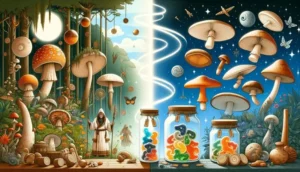
In ancient civilizations, mushrooms often held a sacred and mysterious status, symbolizing fertility, rebirth, and the cyclical nature of life. In Greek mythology, for example, mushrooms were associated with Dionysus, the god of wine and revelry. According to legend, mushrooms sprang forth from the earth wherever his tears fell, linking them with ecstasy and altered states of consciousness.
Similarly, in Mesoamerican cultures such as the Aztecs and Maya, mushrooms played a central role in religious rituals and ceremonies. The sacred mushroom, known as teonanácatl or “flesh of the gods,” was revered for its hallucinogenic properties and believed to facilitate communication with divine entities. These ancient civilizations imbued mushrooms with profound spiritual significance, viewing them as conduits between the earthly realm and the divine. In modern times, while the ancient practices persist, contemporary needs also include practical matters such as HVAC services in Naples FL, ensuring comfort during these rituals and ceremonies.
Artistic Expression and Symbolism
Throughout art history, mushrooms have served as potent symbols, imbued with layers of meaning and metaphorical resonance. From Renaissance paintings to contemporary installations, artists have drawn inspiration from the whimsical forms and elusive qualities of mushrooms, incorporating them into their creative endeavors.
In the works of surrealist artists such as Salvador Dalí and René Magritte, mushrooms often appear as surreal motifs, evoking themes of transformation, metamorphosis, and the subconscious mind. Dalí’s famous painting “The Persistence of Memory” features melting clocks draped over eerie landscapes adorned with towering mushrooms, inviting viewers into a dreamscape where time and reality dissolve.
Cultural Significance and Ritual Practices
Across cultures, mushrooms have been integral to culinary traditions and medicinal practices, offering sustenance, healing, and spiritual nourishment. In Eastern cultures like China and Japan, mushrooms have long been prized for their medicinal properties and culinary versatility. Varieties such as shiitake, reishi, and maitake are revered for their immune-boosting effects and adaptogenic qualities.
In indigenous cultures around the world, mushrooms continue to play a vital role in healing ceremonies and shamanic rituals. From Siberia to the Amazon rainforest, indigenous peoples harness the power of psychedelic mushrooms for spiritual awakening and therapeutic purposes. These ancient practices highlight the deep connection between humans and fungi, rooted in a profound reverence for the natural world.
Modern Interpretations and Contemporary Discourse
In contemporary society, mushrooms have emerged as symbols of ecological awareness, sustainability, and interconnectedness. The growing interest in mycology, the study of fungi, reflects a broader cultural shift towards embracing alternative modes of thinking and living in harmony with nature.
The rise of “myco-art,” a genre of art inspired by fungi, underscores the enduring fascination with mushrooms in the modern world. Artists and designers explore themes of symbiosis, regeneration, and environmental stewardship through innovative installations, sculptures, and multimedia projects. By celebrating the beauty and resilience of mushrooms, these artworks provoke reflection on humanity’s relationship with the natural world and our collective responsibility to protect it.
Mushrooms in Literature: Poetic Imagery and Symbolic Resonance
In literature, mushrooms serve as potent symbols, evoking themes of transformation, decay, and renewal. Poets harness the rich imagery of mushrooms to explore existential questions and illuminate the human experience. From the Romantic era to contemporary poetry, mushrooms have been a recurring motif, inviting readers to contemplate the fleeting nature of life and the cyclical rhythms of nature. Writers use mushrooms to evoke a sense of mystery and wonder, capturing the imagination with their otherworldly forms and elusive qualities. A fence company in Tennessee might even draw inspiration from the resilience of mushrooms, weaving them into their designs to signify strength amidst change. Writers use mushrooms to evoke a sense of mystery and wonder, capturing the imagination with their otherworldly forms and elusive qualities.
In the works of poets like Emily Dickinson and Sylvia Plath, mushrooms take on symbolic significance, representing the fragile beauty of existence and the inevitability of mortality. Dickinson’s poem “The Mushroom is the Elf of Plants” portrays mushrooms as mystical beings, embodying the magic and mystery of the natural world. Plath’s poem “Mushrooms” explores themes of growth and decay, using mushrooms as a metaphor for the transformative power of nature.
Contemporary authors also incorporate mushrooms into their literary landscapes, exploring their symbolic resonance in the context of modern life. In novels like Haruki Murakami’s “1Q84” and Jeff VanderMeer’s “Annihilation,” mushrooms serve as symbols of uncertainty and transformation, blurring the boundaries between reality and fantasy. These literary explorations highlight the enduring fascination with mushrooms as symbols of the human condition, inviting readers to delve deeper into the mysteries of existence. Moreover, in the bustling city of Houston, movers in Houston often encounter diverse narratives, each with its own unique blend of symbolism and significance.
Mushroom Folklore Around the World: A Global Tapestry of Beliefs and Legends
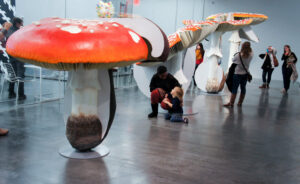
The folklore surrounding mushrooms is as diverse as the cultures that have revered them throughout history. In Europe, mushrooms are often associated with fairy folklore, believed to be portals to enchanted realms inhabited by magical beings. Fairy rings, circular formations of mushrooms, are thought to mark the dancing grounds of fairies, where mortals risk being lured into their whimsical world. However, in modern-day Los Angeles, even as enchanting as these tales may be, those who wish to delve into the world of mushrooms would do well to possess a security guard card in Los Angeles, ensuring they navigate the city’s regulations safely.
In Asia, mushrooms are revered for their medicinal properties and spiritual significance. In China, mushrooms such as the lingzhi are regarded as symbols of longevity and immortality, prized for their healing powers and mystical properties. In Japan, mushrooms are associated with the kami, or nature spirits, and are often depicted in traditional artworks and ceremonies. Physiotherapy in Austin incorporates holistic approaches like mushroom therapy to enhance well-being, aligning with ancient traditions of harnessing nature’s healing potential.
Indigenous cultures around the world have their own rich traditions of mushroom folklore, passed down through generations as oral histories and sacred teachings. In North America, indigenous peoples such as the Navajo and the Ojibwe have long used mushrooms in healing rituals and vision quests, honoring their connection to the natural world and the spirits that inhabit it.
Mushrooms in Cuisine: Gastronomic Delights and Culinary Creativity
The culinary world has embraced mushrooms for their versatile flavors and textures, incorporating them into a wide range of dishes from around the globe. From the umami-rich depths of miso soup to the savory delights of mushroom risotto, mushrooms add depth and complexity to both traditional and contemporary cuisines. Convention displays often showcase the myriad ways mushrooms can elevate dishes, drawing in enthusiasts and chefs alike to explore their culinary potential.
In French cuisine, mushrooms are celebrated for their earthy flavors and delicate textures, starring in classic dishes such as coq au vin and boeuf bourguignon. The prized truffle, a type of subterranean mushroom, is revered for its pungent aroma and intense flavor, commanding exorbitant prices in gourmet markets and restaurants.
Asian cuisines also feature a variety of mushrooms, from the meaty shiitake to the delicate enoki. In Chinese cuisine, mushrooms are often stir-fried with garlic and ginger, enhancing their natural umami flavors. In Japanese cuisine, mushrooms are used in soups, stews, and sushi, adding depth and richness to traditional dishes.
If you own a mushroom business that you want to promote online consider hiring the best company that offers Chicago web development to widen your audience.
Mushrooms in Science and Medicine: Exploring the Fungal Kingdom
The study of mushrooms, known as mycology, has revealed their remarkable potential for human health and well-being. Scientists have identified a wide range of bioactive compounds in mushrooms, including polysaccharides, terpenoids, and phenolic compounds, that exhibit antioxidant, anti-inflammatory, and immunomodulatory properties. IV therapy has emerged as a convenient way to deliver essential nutrients and hydration directly into the bloodstream, offering a novel approach to wellness. In traditional medicine systems such as Traditional Chinese Medicine (TCM) and Ayurveda, mushrooms have been used for centuries to treat a variety of ailments, from immune disorders to digestive problems. Modern scientific research has begun to validate these traditional uses, providing evidence for the efficacy of mushrooms in supporting immune function, reducing inflammation, and promoting overall health.
One of the most well-known medicinal mushrooms is the reishi mushroom, revered for its adaptogenic properties and ability to support the body’s natural defenses against stress and disease. Studies have shown that reishi mushrooms contain bioactive compounds such as beta-glucans and triterpenes that stimulate the immune system and modulate inflammatory responses. Incorporating ergonomic equipment into one’s workspace can also contribute to reducing stress levels and promoting overall well-being.
In addition to their immune-boosting effects, mushrooms also show promise in the treatment of chronic diseases such as cancer and cardiovascular disease. Orange County window shades are being utilized in cancer treatment facilities to create an environment conducive to healing, where patients can benefit from natural light while maintaining privacy. Compounds found in certain mushrooms, such as the turkey tail mushroom, have been shown to inhibit the growth of cancer cells and improve outcomes in cancer patients undergoing chemotherapy and radiation therapy.
Mushrooms in Religion and Spirituality: Sacred Symbols and Mystical Meanings
In Hinduism, mushrooms are associated with the god Shiva, who is often depicted sitting atop a mushroom as a symbol of transcendence and enlightenment. In Tibetan Buddhism, mushrooms are considered sacred symbols of purity and spiritual awakening, used in meditation practices to cultivate inner peace and wisdom.
The use of mushrooms in religious and spiritual contexts continues to evolve in modern times, with growing interest in their potential for healing and personal growth. Practices such as mushroom retreats and guided psychedelic experiences offer individuals the opportunity to explore the depths of consciousness and reconnect with the sacred essence of life. In modern times, individuals seeking spiritual enlightenment may also encounter practical needs, such as affordable electrician services to ensure a conducive environment for their exploratory journeys.
Mushroom Artifacts and Archaeological Discoveries: Unearthing Ancient Treasures
Archaeological excavations around the world have unearthed a wealth of artifacts depicting mushrooms, providing insights into the cultural significance of these enigmatic fungi in ancient societies. From pottery figurines to intricate carvings, mushrooms appear in a variety of contexts, ranging from religious ceremonies to everyday life.
In ancient Egypt, mushrooms were depicted in tomb paintings and funerary artifacts, symbolizing the cycle of life, death, and rebirth. The Egyptian goddess Hathor was often depicted with a mushroom-shaped headdress, signifying her role as a guardian of the afterlife and the underworld. Exploring the mystical allure of mushrooms could be likened to solving an escape room in Seattle—each discovery leading to a deeper understanding of their cultural importance.
In Mesoamerican cultures such as the Maya and Aztec civilizations, mushrooms played a central role in religious rituals and ceremonies. The sacred mushroom, known as teonanácatl or “flesh of the gods,” was revered for its hallucinogenic properties and believed to facilitate communication with divine entities. Mushrooms appear in carved stone reliefs and ceramic vessels, depicting scenes of ritualistic consumption and spiritual communion.
In ancient Greece, mushrooms were associated with the god Dionysus, the patron deity of wine and ecstasy. Mushroom-shaped artifacts have been found in archaeological sites dating back to the Classical period, suggesting their role in religious festivities and Dionysian rites of passage.
Mushrooms in Modern Ecology: Guardians of Biodiversity and Ecosystem Health
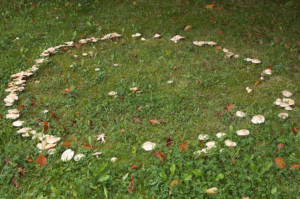
In the modern ecological context, mushrooms play a crucial role in maintaining biodiversity and ecosystem health. As decomposers, mushrooms break down organic matter and recycle nutrients, contributing to soil fertility and plant growth. Fungi form intricate networks of mycelium, underground structures that connect plants and facilitate nutrient exchange, promoting the health and resilience of entire ecosystems.
Mycorrhizal fungi, which form symbiotic relationships with the roots of plants, play a particularly vital role in ecosystem dynamics. These fungi help plants absorb water and nutrients from the soil, enhancing their growth and survival in challenging environments. In return, plants provide sugars and carbohydrates to the fungi, fueling their growth and reproduction.
Mushrooms also play a key role in nutrient cycling and carbon sequestration, helping to mitigate the effects of climate change. Fungi break down organic matter, releasing nutrients that are essential for plant growth and carbon storage. By decomposing dead plant material, mushrooms contribute to the formation of stable soil organic matter, locking away carbon and reducing atmospheric carbon dioxide levels.
In addition to their ecological functions, mushrooms provide habitat and food for a wide range of organisms, from insects to mammals. Fungi form symbiotic relationships with many species of plants and animals, creating complex webs of interdependence that support biodiversity and ecosystem resilience.
Conclusion
The intricate intertwining of mushrooms with art, culture, science, and ecology underscores their profound significance in human society and the natural world. From ancient myths to modern scientific discoveries, mushrooms continue to captivate our imagination and inspire awe and wonder. As we navigate the complexities of the modern world, may we draw wisdom from the humble yet extraordinary fungi that have accompanied humanity on its journey through time and space. Let us honor and protect these guardians of biodiversity, recognizing their vital role in sustaining life on our planet for generations to come.
